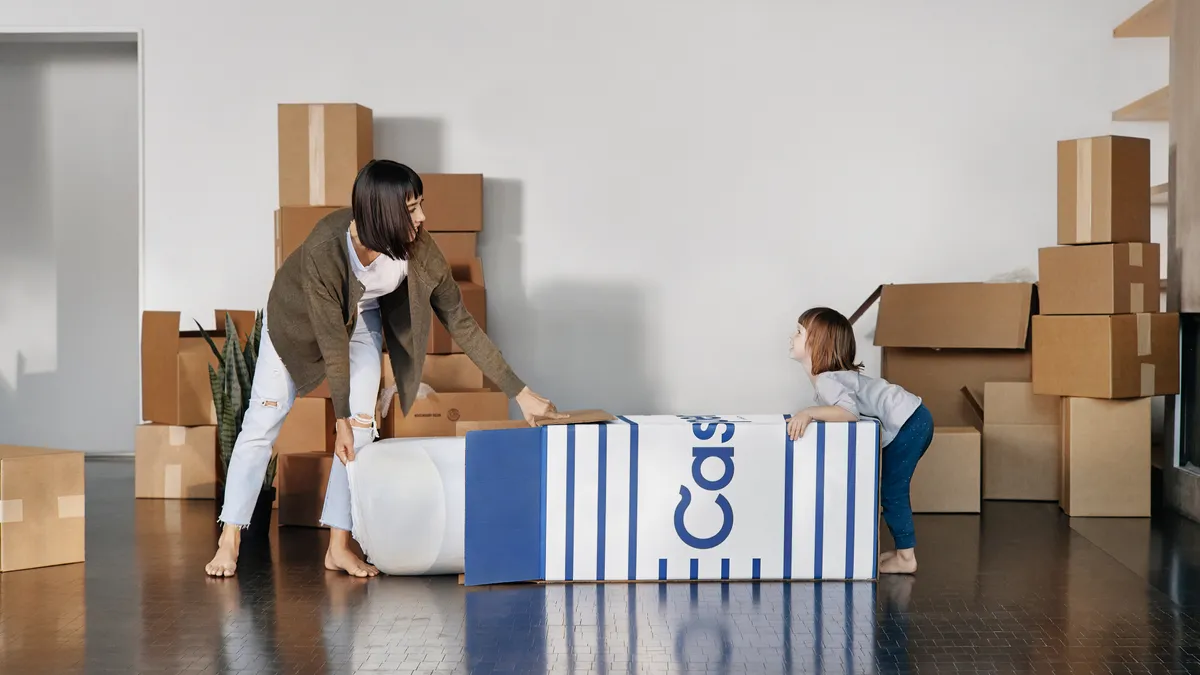NEW YORK — By day two of the National Retail Federation's Big Show, it was not only clear that retailers of all stripes have a newfound appreciation for the value of their physical stores, but also that many are grappling with the limits of the online channel.
Those limits were underscored last week by documents provided to regulators by Casper in preparation for an initial public offering. The mattress company reported $312.3 million in revenue for the nine months ending September 2019, up 20% from the year ago period, and $67.4 million in losses, a 4.9% increase from the previous year. Additionally, the company spent $423 million on marketing expenses from 2016 through 2019. Online sales dominate: the company does run 60 of its own stores and sells through other retailers, but says it's planning "more than" 200 locations in North America.
"The pendulum has swung," Adam Spivack, principal at venture capital firm Comcast Ventures, told an NRF audience regarding such investors' expectations, noting that it's become easier to launch a direct-to-consumer company than to sustain or grow one.
While Casper, like other so-called unicorns (private companies with a valuation of $1 billion or more), is seeking further investment on the public market, others, like women's grooming brand Billie and men's grooming brands Dollar Shave Club and Harry's, were acquired by consumer product goods conglomerates.
"A lot of exits we've seen have been through M and A," Nisha Dua, co-founder and partner of VC firm BBG Ventures, told the NRF panel.
Not every pure-play brand needs its own branded store, Shamin Rostami Walsh, managing director at BAM Ventures, an early stage consumer-focused fund, said on the same panel. But she also said "omnichannel is important," indicating the value of pop-ups or retail partnerships to such brands. Dua noted that even temporary pop-ups "cut down on customer acquisition costs."
Even Mike Smith, chief operating officer at apparel styling service Stitch Fix, said that the physical channel is key for most online brands, although not for Stitch Fix, which has tested a pop-up. Smith called that effort "super-interesting, but not for us," and said that people's own homes, where they try on the clothes they've been sent as part of their monthly styling package, is "better than the in-store experience."
Stitch Fix has been profitable and cash-flow positive since 2014, and has achieved scale, he also noted.
But the store experience, while extremely valuable for touch-and-feel opportunities like trying on apparel, also provides marketing that so far online search or sites have not been able to match, several analysts and retailers have also said during the Big Show.
Doug Stephens, speaking at a gathering of Microsoft retail teams, detailed the litany of attributes of a physical store designed for customer acquisition and marketing rather than purely for the distribution of goods. Such attributes, from good customer service to design, make a store visit an experience that is extremely difficult to replicate online, he said.
Just as e-commerce has become a given for traditional retailers, it now seems a must to maximize and measure the value of the connections and discovery (and even the fulfillment) possible only in store. The online-offline combo takes a high level of execution in back operations, to fulfill expectations for in-store pickup of online orders, for example, in order not to disappoint customers, said Lee Peterson, executive vice president of thought leadership and marketing at WD Partners, which is working with Google on such services for retailers.
Physical retail, in other words, has had to change, according to Stephens. "Maybe e-commerce is next," he said.













